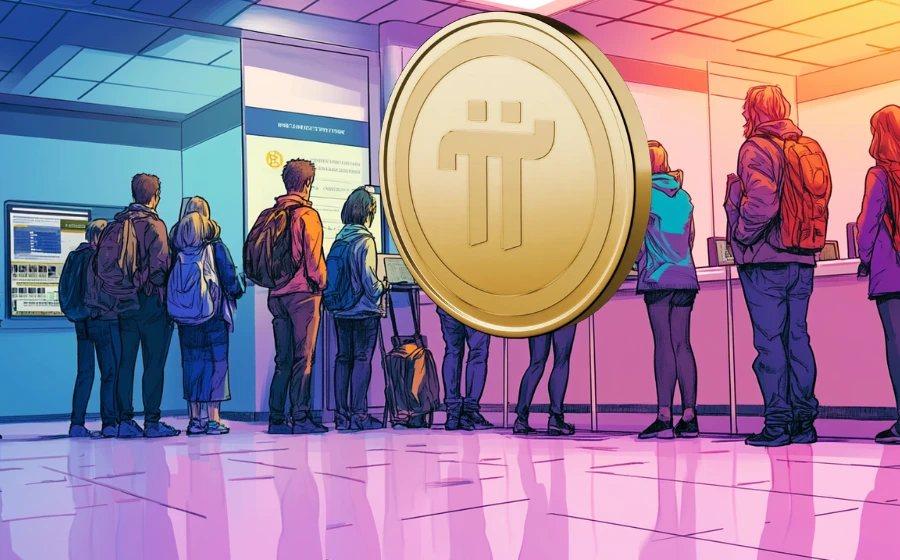
KEYTAKEAWAYS
- The latest market crash exposed the weaknesses of centralized exchanges (CEXes) while showing how decentralized exchanges (DEXes) stayed open and resilient under pressure.
- A growing number of users are moving funds on-chain, shifting trust from companies to code, and accelerating the rise of self-custody and DeFi participation.
- The future may not be DEX replacing CEX entirely, but a gradual merge into hybrid “CeDeFi” systems—balancing compliance, transparency, and user control.

CONTENT

AFTER THE CRASH: CAN DEXES REALLY REPLACE CEXES?
October’s crash hit harder than anyone expected. Bitcoin plunged below $115,000 in hours, Ethereum slid under $4,200, and nearly $19 billion in futures were liquidated—over 1.6 million traders wiped out. On-screen charts froze red, while Binance, OKX, and Bybit briefly stalled or went down. At the very moment users needed liquidity most, their accounts became motionless windows. On-chain, a different scene unfolded. Uniswap, Curve, and dYdX surged to record volumes as users rushed to trade, hedge, and rescue their assets. “When the market crashes,” one trader joked, “code works better than customer service.”
It wasn’t the first time. From 3-12 to 5-19 to FTX, every meltdown has exposed how fragile centralized exchanges (CEXes) remain—and how decentralized finance (DeFi) keeps rewriting what “trust” means. The question returns: can DEXes really replace CEXes?
A FRAGILE TRUST: WHAT THE CRASH REVEALED ABOUT CEXES
“Couldn’t buy the dip. Couldn’t cut my losses.” That was the chorus echoing through trader chats. Many watched positions liquidate in real time; others couldn’t withdraw funds; some doubted that “network congestion” was the real cause.
During the May 19 crash, Binance and Huobi paused ERC-20 withdrawals, Coinbase went offline, and Kraken and Gemini reported connection failures. Within hours, 770,000 accounts were liquidated—about $6.7 billion gone. OKX had once frozen withdrawals for 41 days; FTX misused client funds entirely. Every episode reminded traders that trust in a centralized system is always conditional.
When the system stops, users realize their “assets” are just database entries. Exchanges can halt trading, freeze accounts, or liquidate positions without consent. Compliance reviews, auto-risk controls, or simple human error can all cost users dearly.
“Not your keys, not your coins” became a rallying cry again. After each collapse, wallet downloads and on-chain trading volumes soar. When FTX imploded, Uniswap addresses jumped 1,500% and Curve’s daily volume passed $8 billion. It was a quiet migration—from trusting companies to trusting code.
CEXes still hold advantages: deep books, fiat ramps, and polished UX. But behind that polish lie opaque risk systems and “maintenance” pop-ups at the worst times. In volatile markets, technical fragility can be deadlier than price swings. Once faith cracks, it rarely heals.
THE RISE OF DEXES: CODE THAT KEEPS THE LIGHTS ON
While CEX dashboards froze, Uniswap’s curve spiked. Billions in USDC swapped hands; gas fees soared, but trading never stopped. Curve’s pools tilted under stress yet self-balanced as arbitrageurs stepped in. “As panic spread,” a DeFi researcher said, “the only thing still calm was the contract.”
That is DEX power: no central valve, no pause button. Users hold their own assets, trades match through code, and everything settles transparently. Systems neither lie nor beg for maintenance.
After FTX, DEX market share jumped from 9% to 14%. Uniswap’s daily volume crossed $12 billion; dYdX’s derivatives flow briefly beat Coinbase. It wasn’t just data—it was a mindset shift: a market that runs without permission can survive without trust.
DEXes still have flaws: slippage, MEV attacks, wallet friction. Yet many traders now prefer those risks to waiting for “service restored.” As one veteran said, “On CEX you guess what happens backstage; on DEX every mistake is on-chain.”
That belief fuels rapid growth. By Q2 2025, DEX spot volume reached $877 billion—23% of global exchange trading, a record high. Even Binance began routing orders to PancakeSwap. The center of trust is moving—from companies to protocols.
THE USER SHIFT: FROM DEPENDENCE TO SELF-CUSTODY
Every crisis is an education. After FTX, hardware wallet sales multiplied. During the USDC depeg, when Coinbase paused conversions, users fled to Curve and Uniswap. On-chain data shows CEX Bitcoin reserves at a seven-year low—only 11% of total supply. Funds are leaving centralized custody and flowing into DeFi.
For newcomers, CEX remains the easy on-ramp. But for veterans burned by freezes and bankruptcies, self-custody is survival. They no longer ask “who’s responsible,” but let code be the answer. This is evolution: from trusting platforms to trusting protocols.
Uniswap, dYdX, and Curve’s growth marks “DeFi’s second phase.” The first chased yield; the second pursues sovereignty. When self-custody becomes conviction, DEXes stand not just as marketplaces but as moral statements.
CEXes see it too. Binance, OKX, and Bitget now publish on-chain reserves and invest in DEX projects, exploring a hybrid “CeDeFi” model—CEX UX with DEX transparency. The transition will be messy but inevitable. Users are no longer giving trust to one company—they’re distributing it across code.
REDISTRIBUTING TRUST: THE FUTURE LANDSCAPE
Asking whether DEXes will replace CEXes is really asking: who defines the next financial order?
CZ once said, “In five to ten years, DEXes will be much bigger; in ten to twenty, they’ll surpass CEXes.” From the head of the largest CEX, that’s a striking prediction. He sees the edge not in today’s numbers but in direction—transparency, resistance, autonomy. Future trading might not all happen on-chain, but settlement logic will.
Others believe in coexistence. CEXes handle fiat, compliance, and beginners; DEXes anchor openness and innovation. The boundary between them blurs into CeDeFi: centralized entry, decentralized soul. Here, liquidity, privacy, and regulation all find a new balance.
Skeptics warn that regulation may curb DEX growth. Mandatory on-chain KYC or throughput limits could slow adoption. Yet the trend is cultural as much as technical—decentralization has become a mindset.
DEX may not “replace” CEX, just as EVs didn’t erase gasoline cars. But the gravity is shifting. CEXes won’t vanish, but they must decentralize to survive. FTX taught traders that trust isn’t a login—it’s transparency, verifiable reserves, and code that won’t lie.
The next decade will keep testing both models, but the answer might already be written in a few lines of Solidity: when trust is defined by code, the market finally becomes free.















